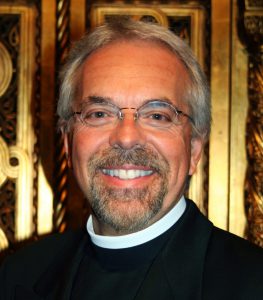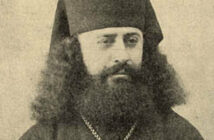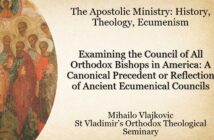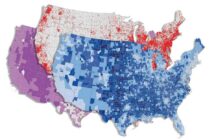
Fr Frank Marangos
Source: OINOS Educational Consulting
By Frank Marangos, D.Min., Ed.D., FCEP
America’s theological schools and seminaries are in need of transfiguration. Facing a myriad of significant challenges ranging from financial instability, decreasing enrollment, student debt, and accusations of postmodern irrelevancy, institutions of Christian higher learning are compelled to replace older models of delivery with structures that engage society and support the student of the 21st century. Apart from developing realistic strategic plans that include the implementation of timely financial dashboards, enrollment-retention scorecards, market segmentation research, honest faculty-curriculum reviews, and specialized development-communications protocols, a solid biblical paradigm will be an invaluable safeguard for leaders who seek to prudently guide their schools through this period of educational transition.
The scriptural narrative of Jesus’ epiphanous Transfiguration (Matthew 17: 1-9; Mark 9: 2-8; Luke 9: 28-36) provides inestimable counsel to contemporary theological schools interested in navigating the difficult challenges before them. Observed in various forms since the 9th century, the message conveyed in the commemoration of Jesus’ mountaintop “illumination,” annually celebrated by the Eastern Orthodox, Roman Catholic, and Anglican churches on August 6th, can inspire leaders to creatively transfigure old and sacred traditions of theological education to do new and exciting things.
An icon of the Transfiguration, which reflects a unique theological contribution towards the revitalization of the nation’s theological schools, hangs in Moscow’s Tretyakov Gallery, the main museum of Russian national art. Known as the Theophanes Icon of the Transfiguration, the early 15th century religious painting includes two diminutive, yet highly significant, scenes. Introduced by Theophanes, the Constantinople-born iconographer, these smaller sections guide the icon’s “readers” to ponder the Transfiguration from both the ascent and descent perspectives of Jesus and his three disciples. Unsurprisingly, Theophanes depicts Christ paying more attention to the disciples’ decent than to their upward climb.
The primary message of the Theophanes Icon is clear. To truly honor the Transfigured Christ, one must leave behind the “tabernacles” and “booths” of religious comfort zones and return in service to a suffering humanity. There can be no extended reveling or permanent mountaintop luxuriating . . . no booths, tabernacles, or triumphalist memorials. While it is understandable that the disciples would be tempted to erect religious booths that would allow them to bask in the presence of their transfigured teacher, whose face and garment “shone white as the light” (Matthew 17:2), Jesus encouraged them to alternatively climb back down the mountain and minister to an “unbelieving and perverse generation” epitomized by the demon-possessed body (tabernacle) of a young boy (Matthew 17:14-21).
Like the three disciples that experienced the Transfigured Glory of Jesus, contemporary seminaries and theological schools have a responsibility to help future religious leaders increase their desire and abilities to transfigure society’s “towns” and to avoid the temptation of reveling in the glory of their speculative “gowns.” They must instill in them the wisdom to understand that the culmination of their theological education is not reaching the “summit” of some perceived luminous mystical knowledge. On the contrary, while foundational to spiritual discernment, the primary goal of their students’ theological education must be the desire to descend in service to others. The focus should therefore never be on the glory of their “gown” . . . but on the tabernacle of humanity’s “town.”
Town and gown are two distinct hamlets of a university. While “town” refers to the non-academic population, “gown” pertains to an academy’s scholastic community. Coined during the Middle Ages, when students admitted to European universities donned garb similar to that worn by the clergy, the long black robe, hood and graduation cap became the social symbols of the educated. By their distinctive clothing, students were set apart and distinguished from the “un-lettered” citizens of the town.
Since that time, relationships between universities and local communities have been either non-existent or unconstructive. As a result of dissimilar philosophies and strict religious practices, many institutions of higher Christian education in the past literally walled themselves off from their host communities. As a result, local populations often viewed seminaries and colleges as supercilious, complaining about their tax-exempt status, physical encroachment, and arrogant students.
A tragic example of such town-gown acrimony is the Saint Scholastica’s Day Riot which took place in 1355 in Oxford England. According to historical accounts, a number of students drinking at the Swindlestock Tavern complained about the quality of the wine. Responding to the indecorous response of John of Barford, the tavern’s landlord and Mayor of Oxford, a student is alleged to have thrown a quart of beer at him. Before cooler heads could prevail, the bell of the City Church summoned the townsmen to arms. The University retaliated by rousing its students to the fray by ringing the bell of the University Church. During the three-day skirmish that ensued, 63 Oxford students and 30 town citizens were killed.
If the nation’s seminaries and theological schools wish to successfully overcome the challenges that confront them, they must first rededicate themselves to their primary mission of serving the “towns” of humanity. If presidents and trustees of our nation’s faith-based institutions of higher learning honestly desire to honor the Transfigured Lord, they must courageously ring the bells of their respective universities and encourage an engagement of service rather than isolation and/or confrontation with society.
Theological Schools must strive to teach their graduates to engage rather than isolate themselves and their future pastoral appointments from society’s privations. While they should not discount the value of diligently striving to acquire the knowledge, skills, and attitudes required to earn a graduate’s gown, leaders of seminaries and theological schools must simultaneously guard against unintentionally promoting the notion that in and of themselves such gowns confer an elite holiness of life. Like His inner circle of disciples, graduates need to understand that the glory of Jesus must be integrated with His incarnational suffering. The 21st Century seminary and theological school must, consequently, follow Jesus where ever He leads, even if they know that the challenges ahead will be painful and difficult.
Recognizing the vital role that education must play in responding to societal issues, the Roman Catholic Pope and Saint, John Paul II, encouraged institutions of higher learning in America to “reengage the culture and communicate effectively the great synthesis of the Christian intellectual tradition that unites both faith and reason” (Ex Corde Ecclesiae, 1990). Speaking at the Catholic University of America in 2008, Pope Benedict XVI underscored his predecessor’s sentiments, by insisting that God’s revelation should “motivate each generation of Christian educators to ensure that the power of God’s truth permeates every dimension of the institutions and the communities they serve.” Far from being just a communication of “factual data (informative) the loving truth of the Gospel,” said the Pontiff Emeritus, “should remain creative and life-changing (performative).”
Intent on responding to the challenges facing theological education throughout the world, in 2016 Ecumenical Patriarch Bartholomew, the spiritual leader of 300 million Orthodox Christians worldwide, hosted 30 theologians, scholars, and teachers from the United States, Europe, Asia and Australia at a Scholars Meeting at the Phanar in Istanbul, Turkey (formerly Constantinople). “Orthodoxy is characterized by a profound sense of continuity with the times and teachings of the Apostolic Church and the Church of the Fathers,” insisted Bartholomew, “but it is also a Church that draws from its rich heritage in order to respond to modern challenges and dilemmas.”
Similar to his Catholic counterparts, the Patriarch exhorted the educational leaders to effectively respond to their role in the public square, where there are so many competing opinions. “Our faith should not be regarded as stagnant or even obsolete,” stated the primus inter pares (first among equals) of the Eastern Orthodox Church. “It must not be conveyed as verbose or perhaps artificial. And it cannot be dismissed as merely cerebral or uninspired. It must be renewed and renewing, reviving and refreshing.” The Patriarch, consequently exhorted the global conclave of educators to “translate the fundamental principles of faith in response to the vital challenges of our time.”
In 2015, seminary presidents were invited (TGC) to discuss what they considered “the greatest challenges” that theological schools and seminaries in North America would face over the next 20 years. Apart from demographic forces, financial constraints, changing delivery models, distance learning, and gender issues, the presidents all agreed with Patriarch Bartholomew’s exhortation that theological schools should “establish strategic community alliances to effectively respond to current cultural and social issues.”
While mission to their respective faith denomination should remain paramount, the presidents additionally agreed with the need to produce graduates who could “actually lead . . . rather than just articulate theological ideas.” Amid cultural, technological, and economic changes, they insisted that theological schools and seminaries have entered a new era of “town-gown” relations for which future religious leaders must be appropriately equipped to “proactively serve society in true partnership.”
Despite the history of “walled universities” and turbulent incidents like the Saint Scholastica’s Day Riot, the last three decades have witnessed the creation of numerous innovative “town-gown” partnerships by American institutions of higher learning. This year, in fact, marks the 30thAnniversary of Campus Compact (https://compact.org/), a national coalition of over 950 college and university presidents that was established to promote community service, civic engagement, and service-learning.
Campus Compact was founded in 1985 by the presidents of Brown, Georgetown, and Stanford Universities. These noted educational leaders shared a common concern about the ongoing health and strength of democracy in the United States and the belief that higher education could be a more effective contributor of more robust support structures for community engagement. As a result, Campus Compact has contributed to and been a beneficiary of a dramatic thawing of town-gown relations.
In recognition of its 30th anniversary (2015-16), the Board of Directors of Campus Compact has invited the presidents of America’s college and university to join in signing a declaration of Commitments for the public purposes of higher education. The declaration includes the following five pledges:
- Empower students, faculty, staff, and community partners to co-create mutually respectful partnerships in pursuit of a just, equitable, and sustainable future for communities beyond the campus—nearby and around the world.
- Prepare students for lives of engaged citizenship, with the motivation and capacity to deliberate, act, and lead in pursuit of the public good.
- Contribute to the health and strength of local communities—economically, socially, environmentally, educationally, and politically.
- Harness institutional capacities—through research, teaching, partnerships, and institutional practice—to challenge the prevailing social and economic inequalities that threaten the democratic future.
- Foster an environment that consistently affirms the centrality of the public purposes of higher education by setting high expectations for members of the campus community to contribute to their achievement.
Like Campus Compact, the International Orthodox Theological Association (https://iota-web.org/), a recently formed community of scholars and professionals dedicated to the worldwide exchange of knowledge within the context of the Orthodox Christian tradition, advocates the promotion of “town-gown” relationship. According to the vision statement of IOTA’s Theological Institutions Group, “theological institutions, once “walled off” from society (especially ecclesiastical seminaries), have been for decades open institutions of spiritual and theological growth and questioning. While book learning is still fundamental, engagement with society constitutes a key element of theological education.” Due to the varied challenges confronting the contemporary seminary and theological school, the IOTA’s Institutions Group suggests that the emphasis in these schools and institutes “cannot simply be on preserving the faith, but must include evangelism, apologetics, encountering, engaging with, and challenging the world.”
According to the Clergy Into Action Study: From Seminary to Ministry (2010-13) (http://into-action.net/), a national study of recently ordained clergy, seminaries are “good at forming ministers who have the basic traditional (and expected) skills in preaching, pastoral care, and sacramental ministry,” but not at shaping leaders who can be “agents of transformational change.” Similar to the more secular-focused Commitments of Campus Compact, the recommendations (2015) of the Lilly Endowment–funded Clergy Into Action analysis of theological schools across North America include the need to “develop programs and partnerships that model for students a Christian community of engagement that provide opportunities for deeper leadership development.”
In a 2005 article published in The Innovation Journal(https://www.innovation.cc/
- Service learning, where students volunteer in a community as part of academic credit.
- Service provision, where faculty and staff conduct long-term service projects in a community.
- Faculty involvement, where faculty become part of local initiatives in a coordinated way.
- Student volunteerism, where students volunteer their time but do not receive academic credit.
- Community in the classroom, where courses seek to enhance community building.
- Applied research, where faculty and staff use their research skills to address local problems.
Since 1938, the Association of Theological Schools (ATS) in America has maintained a list of General Standards for the accreditation of its member institutions. The Standards both define minimal requirements for accreditation and identify qualities associated with good institutional practice. These vitalities articulate the shared understandings and accrued wisdom of the seminary and theological school community in America regarding normative institutional performance.
In 2015, the ATS Commission on Accreditation adopted Standards of Accreditation composed of three complementary parts: (1) General, (2) Educational, and (3) Degree Program Standards. These standards seek to describe excellence in theological education in the context of the different purposes and constituencies of accredited schools. They provide the basis for ongoing institutional and educational improvement as well as descriptions of minimal expectations.
While they may be interpreted in slightly varying ways as a function of each respective school’s structure and educational mission, ATS recommends that Christian institutions of theological higher learning in America adhere to eight General Standards (2015): (1) purpose, planning, and evaluation, (2) identity, (3) curriculum, learning, teaching, and research, (4) library and information resources, (5) faculty, (6) student recruitment, admission, service, and placement, (7) authority and governance, and (8) institutional resources.
The 1st General Standard (2012) by which the Commission on Accrediting of the Association of Theological Schools assess the vitality of member institutions is the school’s reliance on ongoing evaluation. According to the Standard, “theological schools are communities of faith and learning guided by a theological vision.” Honest ongoing evaluation of its mission, leadership, governance, financial resources, administrative structures, and educational programs is the only way that schools can “continue the heritage of theological scholarship, attend to the religious constituencies served, and respond to the global context of religious service and theological education.”
The town-gown thrust of the Association’s initial criterion is expanded in the Commission’s 3rdGeneral Standard that emphasizes the need for theological schools and seminaries to “collaborate and communicate beyond the theological school’s immediate environment to relate it to the wider community of the church, the academy, and the society.” According to ATS, “theological scholarship is enhanced by active engagement with the diversity and global extent of those wider publics, and it requires a consciousness of racial, ethnic, gender, and global diversities.” Consequently, the 3rd General Standard, encourages theological schools to demonstrate “practices of teaching, learning, and research (theological scholarship) that encourage global awareness and responsiveness.”
In his article, Five Principles for Change in Theological Schools” (2017), Frank Yamada, the current executive director of the Association of Theological Schools, indicates that theological education in America is at the crossroads of major shifts both in higher education and in the church. In order to effectively navigate this new world, Yamada recommends that theological schools embrace “a bifocal vision, a sightline that embraces both our legacy and the need for change in our schools.” Yamada offers five principles for advancing such a concomitant vision: (1) conduct a sober assessment, (2) engage the right people in the right positions, (3) change from the margins, not the center, (4) acknowledge that change is difficult, (5) be collaborative.
Yamada’s 3rd principle, namely, the need to advance institutional change “from the margins rather the center,” deserves serious consideration as it is firmly centered on healthy town-gown partnerships advocated by ATS’ General Standards. Traditionally, new programs in most of institutions of higher education, begin at the core with the faculty and the curriculum. Corroborating the research conclusions of the Clergy into Action project, the Commitmentsof the Campus Compact, and Patriarch Bartholomew’s Scholars Conclave, Yamada encourages theological schools to avoid such inclinations by seeking to harness the creative energy for new programs through a synergy between town and gown. In this fashion, Yamada insists, “the creative process would start outward and move inward.”
Except for the most naïve, America’s seminary and theological school leaders all agree that their institutions are experiencing extraordinary challenges that threaten their very survival. The adoption of a solid scriptural paradigm such as the Transfiguration of Jesus may help navigate the numerous complications that are often associated with these difficulties. Only in this way can our nation’s academies of theological inquiry avoid the temptations of denominational elitism and/or institutional sequestration.
Pope Benedict XVI once wrote “no one lives on Mt. Tabor while on earth. We must not remain in isolation from the world and its contradictions, as Peter would have wanted on Mount Tabor” exhorted the Pontiff. “Rather, the Christian life consists in continuously scaling the mountain to meet God and then coming back down, bearing the love and strength drawn from Him, so as to serve our brothers and sisters with God’s own love.”
America’s theological schools and seminaries are in need of adopting such a paradigm of transfiguration. Mountaintops are indeed valuable, but they do not provide a suitable environment for expansion. On the contrary, summits are frequently covered with hard clay, rock, and low creeping vines. As one climbs higher, the air becomes thin and the plants scarce. To experience robust growth, one has to climb down into the valleys where there is an abundance of water, sunshine, and lush rich colors.
This then, is the primary mission of America’s seminaries and theological schools – to engage the world through the transfiguring grace of Jesus Christ. To do so, however, leaders of these institutions of Christian learning must, like Peter, James, and John, faithfully respond to the invitation of God to climb down off their respective educational peaks and serve the town rather than build tabernacles in honor of their gown.
(This and several upcoming issues of Frankly Speaking will discuss how the eight General Standards of the Commission on Accrediting of the Association of Theological Schools can be used to revitalize theological education in America.)



